We got a call from a landlord who’d wanted to upgrade the heating and cooling in his South Emmett, ID duplex for a long time. He just couldn’t figure out how to do it.
Both units used electric radiant heat with baseboard heaters in the winter. And, the tenants had through-the-wall AC units for the summertime.
The baseboard heat didn’t cut it anymore. Maye people settled for it 20 years ago. But, with improved HVAC technology and so many rehabbed houses out there, tenants didn’t want to settle for feeling chilly in the winter.
And, it goes without saying that through-the-wall ACs were also less than ideal. They were loud, guzzled up electricity like crazy, and didn’t really treat the entire space.
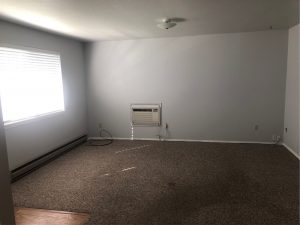
HVAC Challenges In An Old Duplex
The duplex was an old building without ductwork. That meant a forced-air system was out of the question. So, the landlord couldn’t add gas heat.
That also ruled out central air: You need ductwork for that, too. And besides, that still wouldn’t be a great solution.
Forced air would be more powerful and energy-efficient. But, he’d need two furnaces and two AC condensers — one for each unit. That’s a considerable expense.
But, going with only one of each would mean one tenant controlled the thermostat. The upstairs apartment wouldn’t go for that!
This problem dogged our landlord for years until he heard about ductless heating and cooling. It could offer the power of forced-air with the flexibility of portable solutions.
And, it somehow cost less to run?

He was skeptical until he called us. Then, the more he learned, the more he realized it was the way to go.
In this case study, we’ll review:
- Why Ductless Beats Baseboard Heat
- Whole-House AC Without Ductwork
- Mini Split Installation In A Duplex
And, these solutions work in just about any situation. If you’re looking to upgrade the HVAC in your home, rental property, or commercial space in the Treasure Valley, call or email us for a free consultation.
Problem: The two apartments in a South Emmett, ID duplex were always too cold in the winter. They used electric radiant heat in the winter and inefficient through-the-wall ACs in the summer.
Solution: Added a multi-zone Mitsubishi mini split for zoned ductless heating and cooling. These don’t require ductwork and heat and cool better than the old units while using less energy. Each indoor component has a separate thermostat.
Read More: How Much Does A Mini Split Cost In And Around Boise Metro?
Why Ductless Beats Baseboard Heat
Baseboard and ductless heating and cooling have two characteristics in common. They both use electricity. And, they’re both zoned units: You can control the temperature on each unit separately.
But, the similarities stop there.
First off, ductless is just more powerful. The air handlers do a fantastic job of drawing in the air, warming it, and circulating it fast and far.
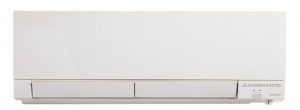
That means one unit can cover a large space. And, it will warm it up much quicker than baseboards.
Plus, when you go with the wall-mounted models, you save a lot of space. Baseboard heaters require at least a foot of clearance around them.
That affects where you can place the furniture. And, in an apartment, space is at a premium.
But, the wall-mounted air handler usually goes up in a corner near the ceiling. It’s totally out of the way.
Energy Efficiency
Next, a mini split uses much less electricity than radiant electric. That’s because you power the heat pump to move warmth from one place to another.
That requires much less power than burning fossil fuels to create heat. That’s how forced air, radiators, and even radiant electric heat work.
Whole-House AC Without Ductwork
Efficiency also comes into play on the cooling side. Ductless also uses way less electricity than both through-the-wall ACs ad even central air. And, the benefits don’t stop there.
Next is the fact that you’ve got one system handling both heating and cooling. So, get rid of those clunky old units!
Now you’ve got one permanently-installed air handler doing double duty.
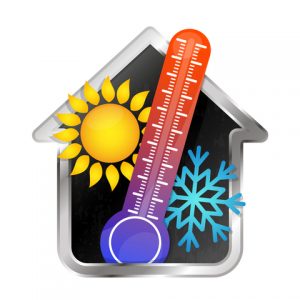
And, it works silently. That beats out forced air and especially portable ACs — those are notoriously noisy.
Zoned Heating And Cooling
We touched on this already, but it’s worth mentioning again here: Each air handler has a built-in thermostat for zoned heating and cooling.

This setup beats the problem of needing two furnaces and condensers for a duplex. This way, each tenant controls the temperature in his or her apartment.
And, when you have more than one air handler in each dwelling, they get even more customization.
And, that’s just what our landlord decided to install.
Read More: Rebates and Financing For Mini Splits In And Around Boise Metro
Mini Split Installation In A Duplex
Installing a mini split in a duplex is a little trickier than a single-family home. But, it’s still a straightforward job, especially since we don’t need to fabricate and put in ductwork. The job only took a few days.
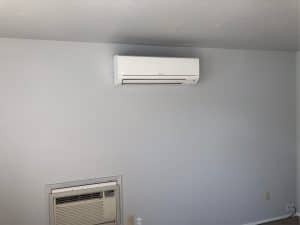
First, our landlord opted for a Hyper Heat system. These heat pumps can keep a home toasty even when it’s negative 13 degrees outside — which, of course, is way colder than it gets in the Treasure Valley.
He opted for two air handlers in each apartment: One for the main area and another in each bedroom. This way, each tenant had even more flexibility than they would with forced air.
Since the heat pump can handle up to eight air handlers, the one we installed has power to spare.
And, just like that, this duplex went from too chilly in the winter and too hot in the summer to just right all year.
For this landlord, it was a small miracle to get such a massive upgrade so quickly. For us, however, it was just another day on the job.
And, if you’re looking to make a similar change for your rental property, call or email us here at Snowflake Air! Starting with a free consultation, we’ll help you design the perfect system for your space for mini split installations in Boise Metro.



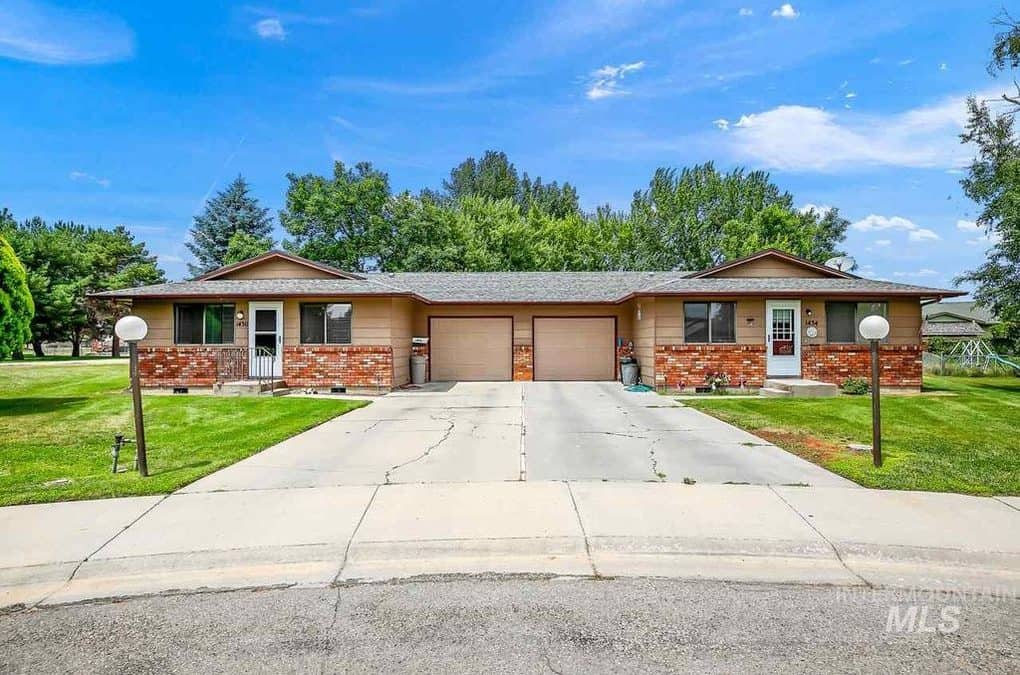

Trackbacks/Pingbacks